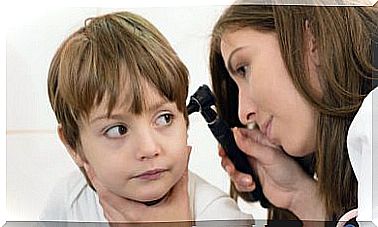Measles
In less developed countries, measles is a major cause of infant mortality.
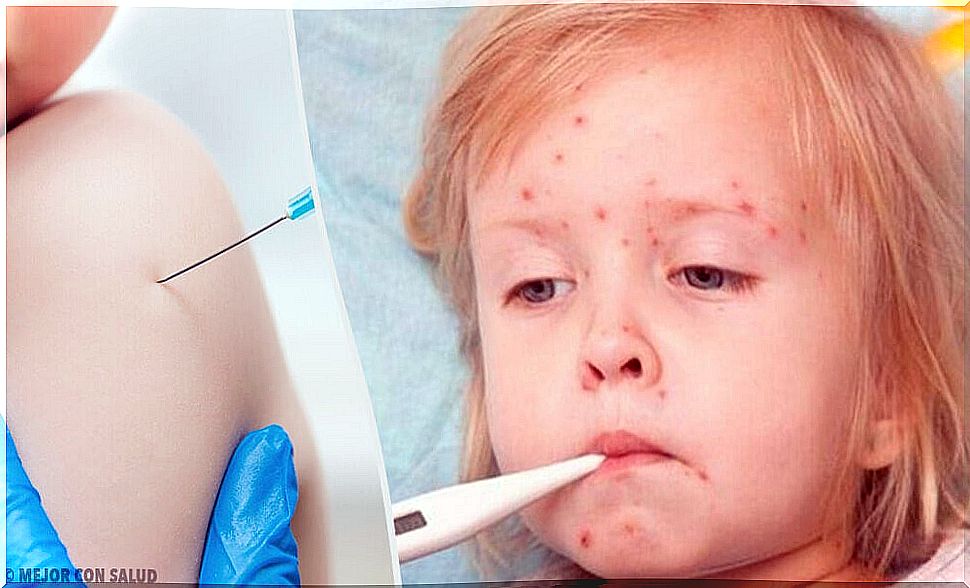
Measles is a contagious infectious disease that spreads through the respiratory tract and whose main reservoir is humans.
Its main characteristic is the pink skin eruptions (exanthemas) that appear on the epidermis of the patient.
It is one of the exanthematic diseases of childhood. This means that, generally, it appears in children. In a few cases, adults who did not have the disease during childhood can catch it later.
Causes of measles
The origin of this infection is viral. Specifically, it is a virus of the Morbillivirus genus known as Paramyxovirus .
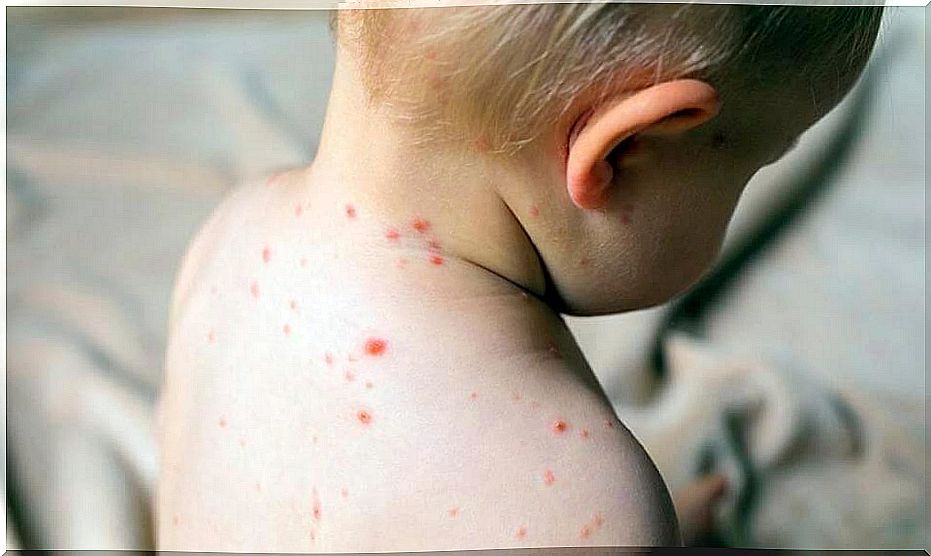
This virus is capable of breaking cell membranes and fusing cells with others, resulting in giant cells that alter the body until they are destroyed if not treated properly.
Symptoms
Depending on the period of the disease in which they appear, the symptoms will vary.
Incubation period
It includes the stage from the moment of infection by the virus to the presence of fever in the patient.
Its duration varies from ten days to two weeks.
Invasive period
The fever peaks. These high numbers are one of the most characteristic features of measles.
This phase is accompanied by general malaise, rhinitis, laryngitis, and conjunctivitis. In most cases, whitish papules appear on the oral mucosa (Koplik’s spots) surrounded by an erythematous halo.
This finding helps to determine the stage of the disease, since Koplik’s spots always appear 1 or 2 days before the rash.
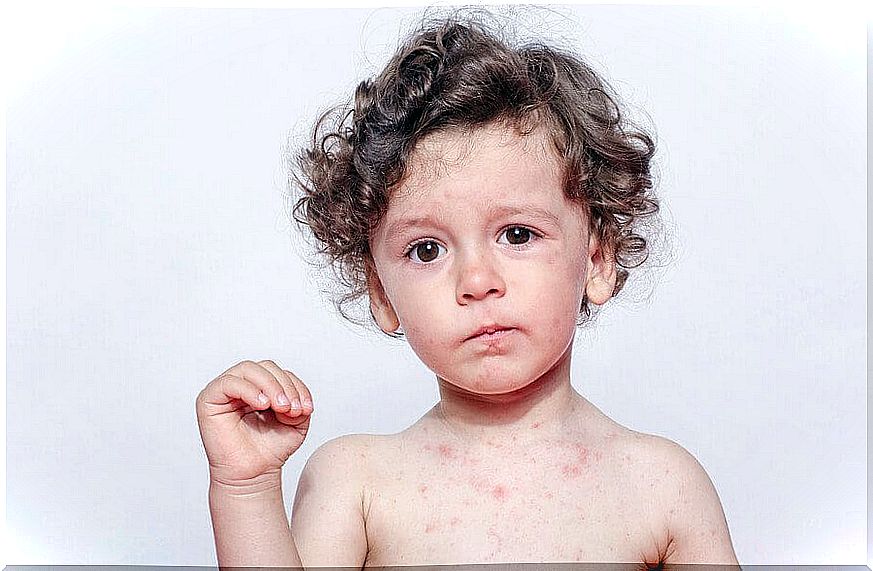
Exanthematic period
It appears from two weeks from the moment of infection. Pinkish skin rashes (numerous and small) are evident around the head and spread over the entire body.
Unlike other exanthematic diseases, no rashes appear on the palms of the hands or on the feet. As the rash clears up (usually lasts 5 days), the skin becomes dry and flaky.
Measles in Adults
Measles is a disease that usually begins in children. However, the few adults who suffer from it suffer more severe manifestations.
It can even be accompanied by otitis or pneumonia. In addition, in the case of pregnant women it is very dangerous, since it presents a high risk of abortion and of having a premature birth.
In immunosuppressed patients, symptoms last longer and are more intense. In the rarest cases, it causes subacute sclerosing panencephalitis.
It is an infection that appears years after the contagion of measles and can be fatal if it is not treated early.
Measles Diagnosis
A routine examination is usually sufficient to diagnose the disease. The pathognomonic features are high fever, Koplik’s spots, and rashes.
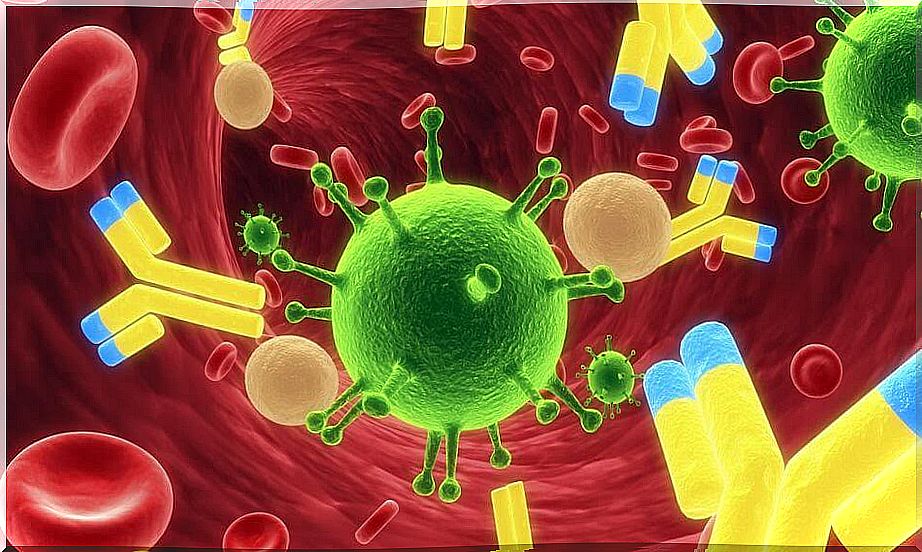
In special cases, an immunological study can be done. This consists of making a count of the antibodies present in the body specific against measles. In this way, we have:
- Demonstration of specific immunoglobulins.
- Demonstration of specific immunoglobulin M.
- Isolation of the virus.
- Detection of virus antigens.
Measles treatment
Treatment is primarily symptomatic. There is no cure as such, but the great discomfort caused by the symptoms can be alleviated.
The most commonly used medications are analgesics for generalized pain, cough suppressants, and drugs to counteract fever.
If the exanthematic period is intense, ointments can be applied to relieve the itching.
Prevention
Prevention consists of administering the vaccine. The measles vaccine comes in combination with the rubella and mumps vaccine (commonly known as the MMR vaccine).
This vaccine appears in all childhood vaccination schedules, it does not usually give side effects and they are three typical childhood diseases that can leave serious sequelae in the development of the child.
With all this, measles is a disease that can be eradicated without any problem. It is simply necessary to administer the vaccine in the first years of life.
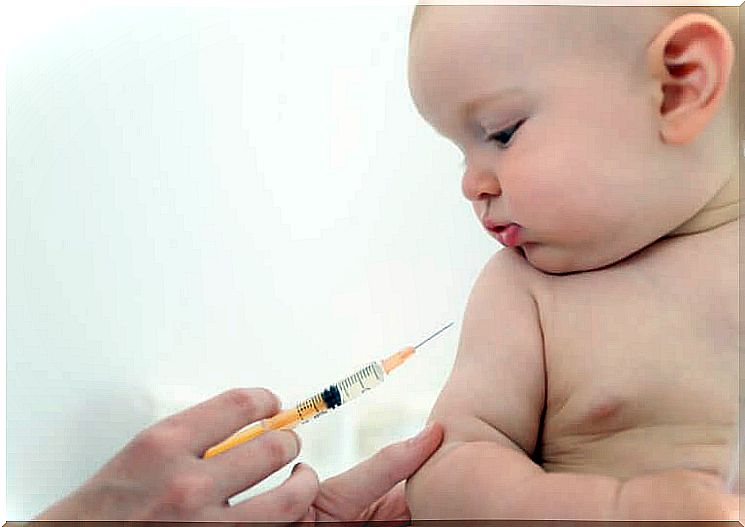
It should be remembered that it is a disease that is related to neurological disorders (coma, psychoneurological deterioration, ataxia, myoclonus, etc.). That is, its consequences can incapacitate the person for life or even determine their death.
This vaccine is present in all vaccination schedules, but nowadays not all parents agree to immunize their children.
That is the main reason why it continues to appear in developed countries, while in less developed countries it is a cause of infant death due to lack of access to the vaccine.



